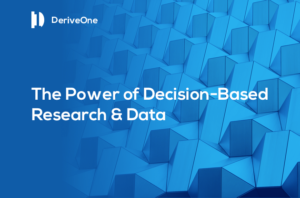
Submitted article by Romi Mahajan
Chief Commercial Officer, Quantarium
The world of technology is known as much for its hype as it is for its legitimate innovations. Atone level, this is understandable. Dreamers can only accomplish big things when they dream big and followup on those dreams with supporting rhetoric. At a different level, however, it serves to dupe consumers, customers,and investors into alchemist fantasies that often defy the laws of physics. What we need, naturally, is a balance.
With AI, and claims about it, we as a community have come to the point where we have to decide if we are okay with “fact-checking.” Are all claims about AI fair and accurate? Do all companies that claim to be “doing AI” pass muster in that regard? After all, haven’t many organizations referred to any and all of their “data”initiatives as AI? Have we diluted the term so as to make it meaningless?
Discerning investors have started to kick the AI tires. Highly skilled Scientists and Engineers increasingly refuse to be beguiled by marketing claims, choosing instead to dig deeply into the code and methodologies surrounding its production before allowing themselves to be recruited by the countless organizations that seek the limited supply of talent.
Perhaps more relevant, still, is that people in all roles ask one fundamental question: “Is there any relevant and practical application to the AI work you are doing?”
On all these matters, Quantarium can hold its head high. From “Real AI” to “Real Applications of AI,”Quantarium is altering and enhancing our notions of what is possible in residential real estate, the world’s single largest asset class.
Take for instance an important but mundane question, likely asked by millions of people every day. “What is my house worth?” Several pundits will offer several answers to this question, no doubt. But, will the answers be accurate and in this case, what does accuracy even mean? What data goes into the answer? Do we have all the data we need? Is it all available? Do the data we collect account for every single aspect of the house that could or should go into the valuation?
Now take an extrapolation of this question with magnified scale. Imagine you are the CEO of a large bank that “owns” half-a-million residential mortgages. What is your portfolio worth? How much risk are you holding in the portfolio? Are you too exposed in a particular geography or demographic? Do you have sufficient data and the ability to process and make sense out of it? Can you do this all with the speed that is called for by regulation and market conditions?
These questions are easy to pose but hard to answer. Further, while these questions may not seem “sexy,” they underscore the reality of the single biggest source of economic value and for most families the single largest source of equity. Using AI to drive accuracy, speed, and scale in this market is complex, genuine and incredibly important.Indeed, real AI applied to real industries with real outcomes is the name of the game. Therein lies the balance we seek, the convergence of both the hype and of the reality.






